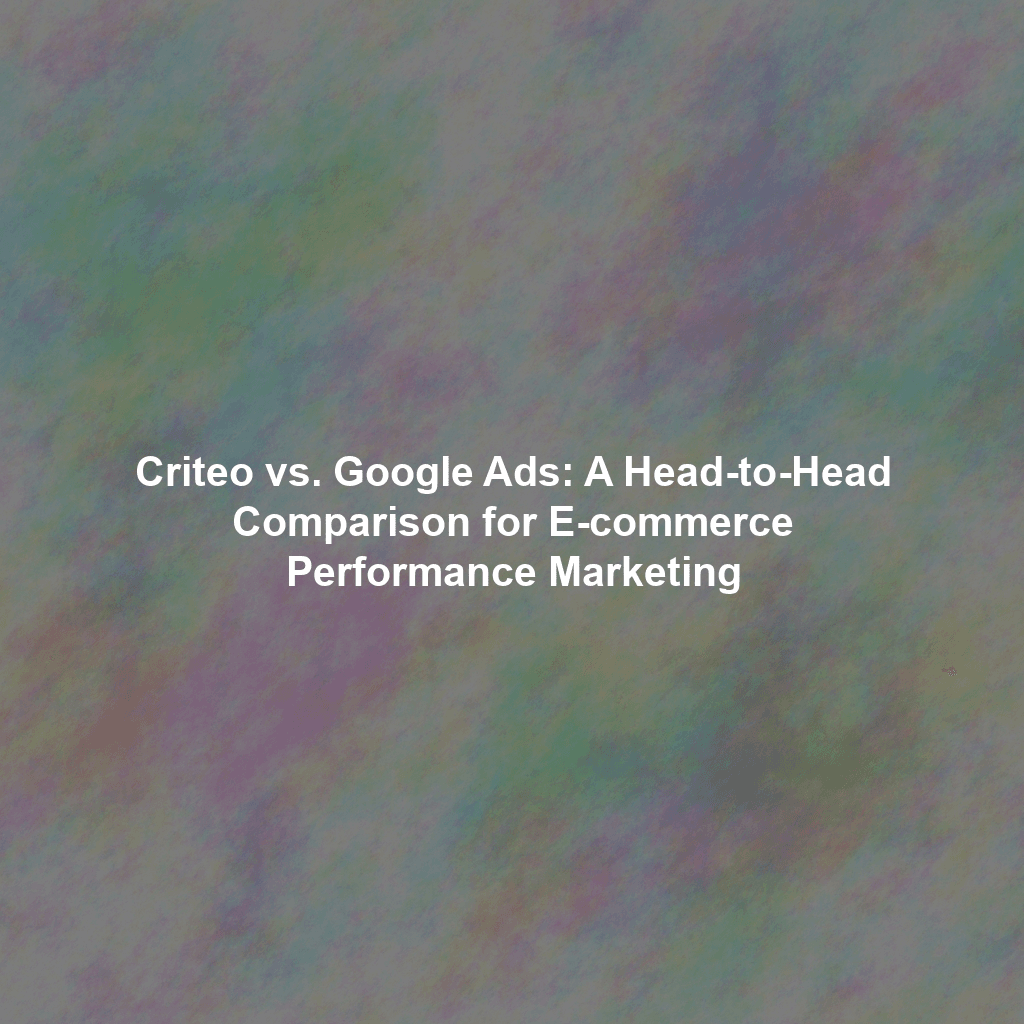The digital marketing landscape is undergoing a seismic shift. Increased awareness and concerns about data privacy, coupled with stricter regulations like GDPR and CCPA, are forcing marketers to rethink their strategies. For those leveraging Criteo, a leader in personalized advertising, this necessitates a proactive approach to adapt to these changes and ensure long-term success. This article explores the implications of these evolving trends and provides practical techniques for building privacy-compliant Criteo campaigns, effectively leveraging first-party data, and navigating the transition to a cookieless future. We’ll also delve into maintaining campaign performance while prioritizing user privacy and fostering trust with your customers.
Understanding the Shifting Sands: Privacy Regulations and Consumer Behavior
The introduction of GDPR (General Data Protection Regulation) in Europe and CCPA (California Consumer Privacy Act) in the US has fundamentally changed how businesses collect, process, and use personal data. These regulations grant users more control over their data, including the right to access, rectify, and erase their information. Ignoring these regulations can lead to hefty fines and reputational damage.
Furthermore, consumer behavior is evolving in tandem with these regulatory changes. Individuals are becoming increasingly privacy-conscious and demanding greater transparency and control over their online experiences. They are more likely to opt out of tracking, use ad blockers, and choose brands that demonstrate a commitment to data privacy.
The Impact on Criteo Marketing
These changes directly impact Criteo marketing in several ways:
- Reduced data availability: Restrictions on cookie usage and increased opt-out rates limit the amount of data available for targeting and personalization.
- Decreased campaign performance: Without reliable data, it becomes more challenging to accurately target the right audience and deliver relevant ads, potentially leading to lower conversion rates.
- Increased compliance burden: Marketers must ensure that their Criteo campaigns comply with all applicable privacy regulations, requiring careful planning and implementation.
Building Privacy-Compliant Criteo Campaigns
To navigate these challenges, it’s crucial to build privacy-compliant Criteo campaigns. Here are some key strategies:
Transparency and Consent
Be upfront with users about how you collect and use their data. Implement a clear and concise privacy policy that explains your data practices in plain language. Obtain explicit consent before collecting any personal data, especially for activities like retargeting.
Data Minimization
Only collect the data you absolutely need for your Criteo campaigns. Avoid collecting sensitive or unnecessary information. This reduces your compliance burden and minimizes the risk of data breaches.
Anonymization and Pseudonymization
Whenever possible, anonymize or pseudonymize user data to protect their identities. This involves removing or replacing identifying information with unique identifiers that cannot be easily linked back to the individual.
Regularly Review and Update Your Practices
Privacy regulations are constantly evolving. Stay informed about the latest changes and update your Criteo campaigns and data practices accordingly. Regularly audit your data processing activities to ensure compliance.
Leveraging First-Party Data Effectively
In a privacy-focused world, first-party data (data collected directly from your customers) becomes an invaluable asset. Here’s how to leverage it effectively within your Criteo strategy:
Customer Relationship Management (CRM) Integration
Integrate your CRM system with Criteo to upload customer data, such as email addresses and purchase history. This allows you to create highly targeted audiences based on customer demographics, interests, and behavior.
Website and App Data
Track user behavior on your website and app to understand their preferences and purchase intentions. Use this data to personalize Criteo ads and deliver relevant product recommendations.
Loyalty Programs and Surveys
Encourage customers to join your loyalty program and participate in surveys. This provides valuable insights into their needs and preferences, which can be used to improve your Criteo targeting and messaging.
Enriching Data with Contextual Signals
While third-party data diminishes, focus on contextual signals like the website category or content viewed alongside ads. Criteo’s contextual solutions can help target relevant audiences without relying solely on personal data.
Adapting to a Cookieless Future
The phasing out of third-party cookies is a major challenge for digital marketers. However, Criteo is actively developing solutions to address this issue. Here are some strategies to adapt to a cookieless future:
Criteo’s Commerce Media Platform
Criteo’s platform is designed to function effectively in a cookieless environment. It leverages alternative identifiers and advanced algorithms to deliver personalized ads without relying on third-party cookies.
Identity Resolution Solutions
Explore identity resolution solutions that help you match users across different devices and platforms without using cookies. These solutions can improve the accuracy of your targeting and personalization.
Invest in Contextual Advertising
Contextual advertising focuses on delivering ads based on the content of the website or app where the ad is displayed. This approach does not rely on cookies and can be effective in reaching relevant audiences.
Embrace Advanced Machine Learning
Criteo’s machine learning capabilities are crucial for adapting to a cookieless world. Their algorithms can predict user behavior and optimize campaigns even with limited data.
Maintaining Campaign Performance While Prioritizing User Privacy
It’s possible to maintain strong campaign performance while prioritizing user privacy. By focusing on the following strategies, you can achieve both:
- Focus on ROI: Emphasize campaign objectives that drive tangible business results, such as sales and leads.
- Optimize for conversions: Use Criteo’s conversion tracking capabilities to measure the effectiveness of your campaigns and optimize them for maximum conversions.
- Test and iterate: Continuously experiment with different targeting strategies, ad creatives, and bidding approaches to find what works best for your audience.
- Build trust with customers: Be transparent about your data practices and provide users with control over their data. This will foster trust and loyalty, which can lead to increased engagement and conversions.
Conclusion
The digital marketing landscape is constantly evolving, and adapting to privacy changes and evolving consumer behavior is essential for long-term success. By building privacy-compliant Criteo campaigns, leveraging first-party data effectively, and preparing for a cookieless future, you can maintain strong campaign performance while prioritizing user privacy and building trust with your customers. Embrace these changes as an opportunity to create a more sustainable and ethical marketing ecosystem.
 Skip to content
Skip to content

